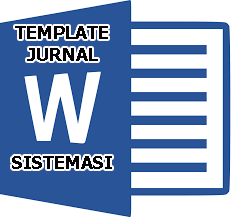Enhancing Deep Learning-based Classification of Cassava Leaf Diseases using CLAHE and SMOTE
Abstract
Keywords
Full Text:
PDFReferences
G. Byju and G. Suja, “Chapter Five - Mineral Nutrition of Cassava,” Vol. 159, D. L. B. T.-A. in A. Sparks, Ed., Academic Press, 2020, pp. 169–235. DOI: https://doi.org/10.1016/bs.agron.2019.08.005.
C. A. Zárate-Chaves, D. Gómez de la Cruz, V. Verdier, C. E. López, A. Bernal, and B. Szurek, “Cassava Diseases Caused by Xanthomonas Phaseoli pv. Manihotis and Xanthomonas Cassavae,” Mol. Plant Pathol., Vol. 22, No. 12, pp. 1520–1537, Dec. 2021, DOI: https://doi.org/10.1111/mpp.13094.
A. John, “Identification of Diseases in Cassava Leaves using Convolutional Neural Network,” in 2022 Fifth International Conference on Computational Intelligence and Communication Technologies (CCICT), Jul. 2022, pp. 1–6. DOI: https://doi.org/10.1109/CCiCT56684.2022.00013.
C. C. Chen, J. Y. Ba, T. J. Li, C. C. K. Chan, K. C. Wang, and Z. Liu, “EfficientNet: A Low-Bandwidth IoT Image Sensor Framework for Cassava Leaf Disease Classification,” Sensors Mater., Vol. 33, No. 11, pp. 4031–4044, 2021, DOI: https://doi.org/10.18494/SAM.2021.3526.
G. Opiyo, “A Predictive Machine Learning Application in Agriculture: Cassava Disease Detection and Classification with Imbalanced Dataset using Convolutional Neural Networks,” Egypt. Informatics J., Vol. 22, Mar. 2020, DOI: https://doi.org/10.1016/j.eij.2020.02.007.
E. Mwebaze, T. Gebru, A. Frome, S. Nsumba, and J. Tusubira, “iCassava 2019 Fine-Grained Visual Categorization Challenge,” 2019, [Online]. Available: http://arxiv.org/abs/1908.02900
A. Emmanuel, R. W. Mwangi, P. Murithi, K. Fredrick, and T. Danison, “Classification of Cassava Leaf Diseases using Deep Gaussian Transfer Learning Model,” Eng. Reports, Vol. 5, No. 9, pp. 1–13, 2023, DOI: https://doi.org/10.1002/eng2.12651.
O. O. Abayomi-Alli, R. Damaševičius, S. Misra, and R. Maskeliūnas, “Cassava Disease Recognition from Low-Quality Images using Enhanced Data Augmentation Model and Deep Learning,” Expert Syst., Vol. 38, No. 7, p. e12746, Nov. 2021, DOI: https://doi.org/10.1111/exsy.12746.
N. S. Fatimah and S. Agustin, “Klasifikasi Citra Batik menggunakan Local Binary Pattern (LBP) dan Support Vector Machine (SVM),” J. Algoritm., Vol. 22, No. 1 SE-Artikel, pp. 185–196, May 2025, DOI: https://doi.org/10.33364/algoritma/v.22-1.2208.
W. Setiawan, Deep Learning menggunakan Convolutional Neural Network : Teori dan Aplikasi. Media Nusa Creative, 2020.
M. Hayati et al., “Impact of CLAHE-based Image Enhancement for Diabetic Retinopathy Classification Through Deep Learning,” Procedia Comput. Sci., Vol. 216, pp. 57–66, 2023, DOI: https://doi.org/10.1016/j.procs.2022.12.111.
L. Wang, M. Han, X. Li, N. Zhang, and H. Cheng, “Review of Classification Methods on Unbalanced Data Sets,” IEEE Access, Vol. 9, pp. 64606–64628, 2021, DOI: https://doi.org/10.1109/ACCESS.2021.3074243.
A. Pratondo, “Classification of Cassava (Manihot sp.) Leaf Variants using Transfer Learning,” Indones. J. Electr. Eng. Informatics, Vol. 11, No. 2, pp. 442–452, 2023, DOI: https://doi.org/10.52549/ijeei.v11i2.4685.
M. Tan and Q. V. Le, “EfficientNetV2: Smaller Models and Faster Training,” Proc. Mach. Learn. Res., Vol. 139, pp. 10096–10106, 2021.
P. P. Dalvi, D. R. Edla, and B. R. Purushothama, “Diagnosis of Coronavirus Disease From Chest X-Ray Images using DenseNet-169 Architecture,” SN Comput. Sci., Vol. 4, No. 3, p. 214, 2023, DOI: https://doi.org/10.1007/s42979-022-01627-7.
K. Okokpujie, I. P. Okokpujie, O. I. Ayomikun, A. M. Orimogunje, and A. T. Ogundipe, “Development of a Web and Mobile Applications-based Cassava Disease Classification Interface using Convolutional Neural Network,” Math. Model. Eng. Probl., Vol. 10, No. 1, pp. 119–128, 2023, DOI: https://doi.org/10.18280/mmep.100113.
M. Buda, A. Maki, and M. A. Mazurowski, “A Systematic Study of the Class Imbalance Problem in Convolutional Neural Networks,” Neural Networks, Vol. 106, pp. 249–259, 2018, DOI: https://doi.org/10.1016/j.neunet.2018.07.011.
J. M. Johnson and T. M. Khoshgoftaar, “Survey on Deep Learning with Class Imbalance,” J. Big Data, Vol. 6, No. 1, p. 27, 2019, DOI: https://doi.org/10.1186/s40537-019-0192-5.
A. Fernández, S. García, M. Galar, R. Prati, B. Krawczyk, and F. Herrera, Learning from Imbalanced Data Sets. 2018. DOI: https://doi.org/10.1007/978-3-319-98074-4.
G. Huang, Z. Liu, L. Van Der Maaten, and K. Q. Weinberger, “Densely Connected Convolutional Networks,” in 2017 IEEE Conference on Computer Vision and Pattern Recognition (CVPR), 2017, pp. 2261–2269. DOI: https://doi.org/10.1109/CVPR.2017.243.
C. Shorten and T. M. Khoshgoftaar, “A Survey on Image Data Augmentation for Deep Learning,” J. Big Data, Vol. 6, No. 1, p. 60, 2019, DOI: https://doi.org/10.1186/s40537-019-0197-0.
DOI: https://doi.org/10.32520/stmsi.v14i6.5530
Article Metrics
Abstract view : 435 timesPDF - 28 times
Refbacks
- There are currently no refbacks.

This work is licensed under a Creative Commons Attribution-ShareAlike 4.0 International License.









